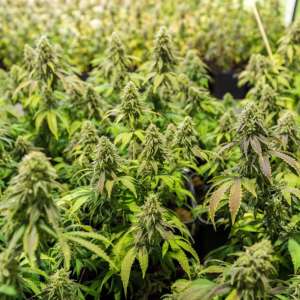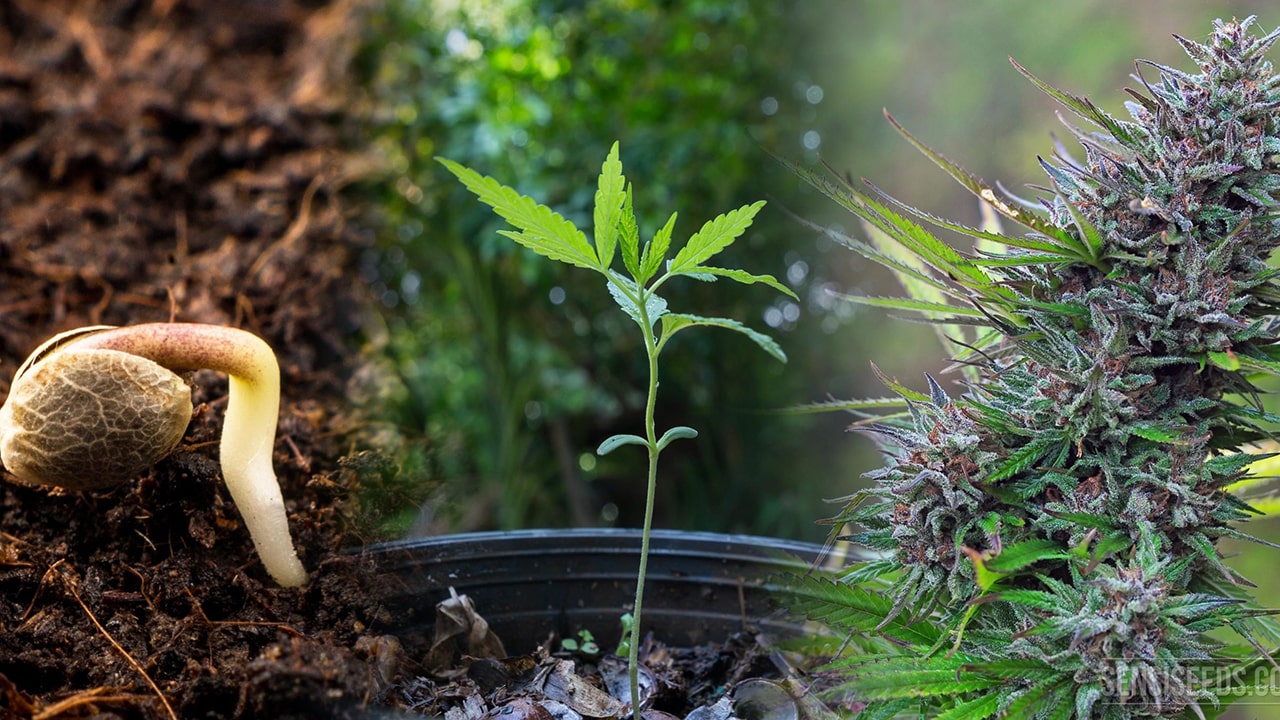- Blog
- Why can even feminized seeds of the same variety behave differently?
Why can even feminized seeds of the same variety behave differently?
Why can even feminized seeds of the same variety behave differently?

At first glance, it may seem that feminized cannabis seeds of the same variety should produce exactly the same plants. In reality, however, even if you buy quality feminized seeds from the same producer, you may find that the plants are noticeably different from each other. Why does this happen?
The answer lies in the genetics of cannabis seeds. Even the most stable feminized cannabis varieties are the result of complex cannabis breeding, involving hybrid lines with a variety of traits. This means that each specimen carries a specific combination of genes, and these genes may manifest themselves differently during germination and growth. One bush may be more compact, another more elongated, one will bloom faster and another slower, even though they all come from the same seed packet.
The genetic characteristics of the seeds are particularly pronounced in hybrids that combine indica and sativa characteristics. Even with feminization, which reduces the likelihood of male plants, a certain degree of genetic variability remains. This is normal: cannabis is a living organism, not a clone.
That's why when choosing cannabis varieties, it's worth paying attention not only to the appearance and flavor, but also to the stability of the genetics that the manufacturer guarantees. The higher the quality of the cannabis seeds, the less the difference between the plants will be, but it is impossible to completely eliminate it - and that's the beauty of the natural process.

Cannabis growing conditions: how the environment affects the behavior of feminized plants
Even if the grower has the highest quality feminized seeds in hand, one should not expect all plants to grow exactly the same. Different environmental conditions can dramatically affect the development, shape, yield and even flavor of the same variety. This is especially true when growing cannabis indoors, where the microclimate is created artificially.
The following are the main factors that influence plant behavior:
- Temperature fluctuations and cannabis growth
Sharp temperature differences between night and day can stunt growth or cause stress. Feminized cannabis varieties with sativa-dominant genetics are particularly sensitive to this, as they are more suited to a stable, warm climate. - Cannabis Light Mode
Disturbances in the light schedule have a direct impact on growth rate and flowering initiation. Sativa-dominant varieties require more light during the growing phase, otherwise the plant may become elongated or stunted. - Effect of fertilizers on plant growth
Over- or under-nutrition can affect shrubs differently, even if they are from the same batch. One plant may adapt well to the soil composition and nutrient solution, while another will show micronutrient deficiencies. This is especially important to consider when using hybrid cannabis seeds, where the response to fertilizer can vary depending on the ratio of indica to sativa plants.
Thus, the process of growing cannabis is not just about planting seeds, but a whole system of working with climate, light and nutrition. Even with the same genetics - whether pure sativa or a balanced hybrid - the result can differ due to minute changes in environmental conditions.

Why feminized seeds are different: a combination of genetics and environment
Even under ideal growing conditions and using a proven variety, many growers still notice: bushes from the same package can look and develop differently. Why does this happen?
The clue lies in the genetics of cannabis seeds and the plants' reaction to external factors. Even the most stable feminized cannabis varieties are still living organisms, which means they are subject to both internal and external influences. This is especially evident in hybrid varieties that combine indica and sativa traits.
The table below illustrates which factors play a key role in the behavior of feminized seeds and how they interact with the genetic traits of the seeds:
| Factor | How does it affect the behavior of the plant | What is particularly affected by the varieties |
| Genetic basis | Determines basic shape, size, flowering rate | Indica for compactness, sativa for height. |
| Temperature fluctuations | Can cause stress, inhibit growth | Indica is cold tolerant, sativa is heat tolerant |
| Light mode | Affects vegetative and flowering stages | Sativa requires more light |
| Type and amount of fertilizer | Excess or deficiency elicits a different response from each shrub | Indica responds quickly to excess nitrogen |
| Degree of ventilation and humidity | May affect fungal resistance, bud development | Indica likes drier air |
These differences explain why feminized seeds are different, even if they are of the same variety. An indica-dominant plant grown under optimal conditions will show stability and compactness, whereas a similar seed under less suitable conditions may develop weaker or longer.
Cannabis seed quality plays an important role, but only when combined with a well thought out cannabis growing process can a stable and predictable result be achieved. This is especially important to remember for those new to feminized seeds.
